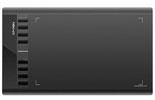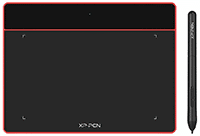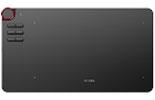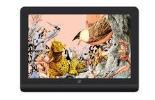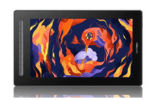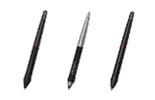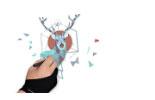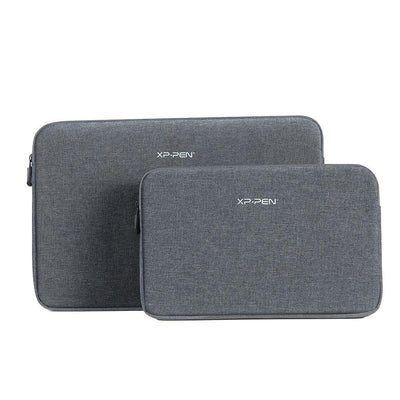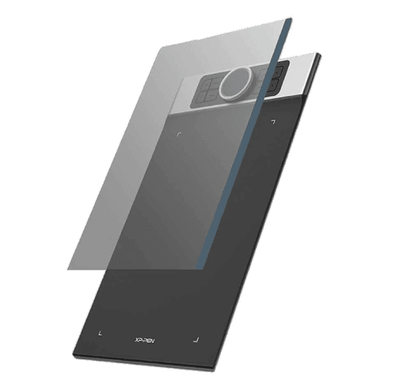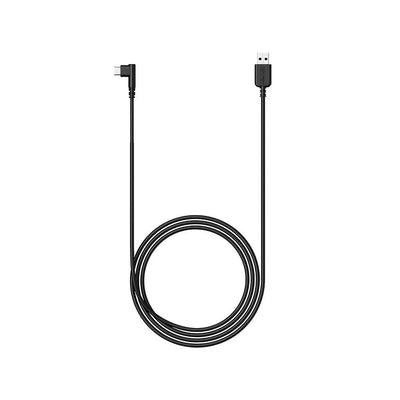What is Animation Drawing?

Animation drawing is an art form that has fascinated audiences for decades. It is the process of creating motion and bringing characters and objects to life through the use of drawings or computer-generated images.
In this article, we will explore the basics of animation drawing, the different types of animation, and the step-by-step process involved in creating animated works.
Understanding the Basics of Animation Drawing

Animation drawing is a fascinating art form that has captivated audiences for decades. It involves the creation of a sequence of images that, when played in rapid succession, give the illusion of movement.
These images can be hand-drawn on paper or created digitally using software. Animation drawing is a fundamental element of animation, as it forms the building blocks for bringing static images to life.
- Defining Animation Drawing
Animation drawing is not just about drawing a single image; it is about creating a series of images that tell a story.
Each image, or frame, is carefully crafted to convey movement and emotion. Whether it's a character walking, a ball bouncing, or a flower blooming, animation drawing brings these actions to life.
When it comes to hand-drawn animation, artists use a variety of tools such as pencils, pens, and markers to create their drawings. Each frame is meticulously drawn on a piece of paper, with slight variations between frames to create the illusion of movement.
This traditional method requires patience and skill, as it can take hundreds or even thousands of drawings to create just a few seconds of animation.
In contrast, digital animation drawing has revolutionized the industry. With the help of powerful software, animators can create stunning visuals with ease.
Digital drawing tablets and styluses allow artists to draw directly on a screen, mimicking the feel of traditional drawing.
The software also offers features like onion skinning, which allows artists to see previous frames as they draw, making it easier to maintain consistency in movement.
- The History and Evolution of Animation Drawing
The history of animation drawing dates back to the early days of cinema, where pioneers like Walt Disney and Winsor McCay introduced the concept of hand-drawn animation.
These early animators had to painstakingly draw each frame by hand, resulting in films like Snow White and the Seven Dwarfs and Gertie the Dinosaur.
As technology advanced, so did the art of animation drawing. The introduction of computers and digital software revolutionized the animation industry, making it more accessible and efficient.
Animators could now create drawings digitally, eliminating the need for physical materials and allowing for easier editing and manipulation of frames.
Today, animation drawing is not limited to traditional 2D animation but encompasses diverse styles such as 3D computer animation, motion graphics, and stop motion.
3D computer animation involves creating three-dimensional models and animating them using software. Motion graphics combine animation with graphic design, creating visually stunning and dynamic visuals.
Stop motion animation, on the other hand, involves manipulating physical objects and capturing them frame by frame to create movement.
Animation drawing continues to evolve as technology advances. With the rise of virtual reality and augmented reality, animators are exploring new ways to immerse audiences in their creations.
The possibilities are endless, and the art of animation drawing will continue to captivate and inspire for years to come.
Different Types of Animation Drawing

Animation drawing is a fascinating art form that brings characters and stories to life through the illusion of motion.
There are various techniques and styles used in animation, each with its own unique characteristics and applications. Let's explore some of the different types of animation drawing:
- Traditional Animation Drawing
Traditional animation drawing, also known as hand-drawn animation, is a classic technique that has been used for decades. It involves creating individual frames on sheets of paper, where each frame captures a slight variation in movement or expression. These frames are then photographed and played back at high speed, creating the illusion of motion.
Traditional animation drawing requires a high level of skill and patience. Animators meticulously draw each frame, paying attention to details such as character design, fluidity of movement, and facial expressions.
This technique allows animators to infuse their personal style into the characters and bring a unique charm to their work.
- 2D Vector-based Animation
2D vector-based animation is a modern approach that relies on mathematical equations and algorithms to create smooth and scalable animations.
Unlike traditional animation drawing, where each frame is hand-drawn, 2D vector-based animation uses computer software to manipulate shapes, lines, and colors.
This form of animation drawing is commonly used in television shows, advertisements, and web animations.
It offers a more streamlined and efficient workflow, allowing animators to make changes easily and experiment with different styles and effects.
With the advancement of technology, software tools have become more sophisticated, providing animators with a wide range of options to bring their ideas to life.
- 3D Computer Animation
3D computer animation is a complex and immersive technique that involves the creation of three-dimensional models and environments using specialized software.
Animators use a combination of drawing skills and technical knowledge to bring these models to life. The process includes modeling, texturing, rigging, animating, and rendering.
This type of animation drawing is widely used in movies, video games, and visual effects. It offers a realistic and immersive experience, enabling audiences to interact with lifelike characters and dynamic environments.
With the advancement of technology, 3D computer animation has become more accessible, allowing animators to create stunning visuals and push the boundaries of storytelling.
- Motion Graphics
Motion graphics combine animation, audio, and typography to create visually appealing and informative elements.
It is often used in advertising, title sequences, and explainer videos. Motion graphics animation drawing involves the manipulation of text, shapes, and icons to convey messages or enhance a story.
With the rise of social media and online platforms, motion graphics have become an effective way to capture attention and engage viewers in a short period of time.
Animators use various techniques such as kinetic typography, animated infographics, and dynamic transitions to create visually striking and engaging content.
- Stop Motion
Stop motion animation drawing is a unique technique that involves capturing individual frames of real-life objects or puppets and playing them back in sequence.
This method takes advantage of the persistence of vision, where our eyes perceive a series of still images as continuous motion.
Stop-motion animation drawing requires careful planning, precise movements, and attention to detail. Animators meticulously position and manipulate the objects or puppets, capturing each frame with precision.
This technique offers a unique and tactile look, often evoking nostalgia and charm. Stop-motion animation has been used in various films, commercials, and music videos, showcasing the creativity and versatility of this art form.
Animation drawing is a dynamic and ever-evolving field, with new techniques and technologies constantly emerging.
Each type of animation drawing offers its own set of challenges and opportunities, allowing animators to express their creativity and bring stories to life in captivating ways.
The Process of Animation Drawing

Animation drawing is a fascinating art form that requires creativity, skill, and attention to detail. It involves bringing static images to life through a series of drawings or digital manipulations.
The process of animation drawing encompasses several steps, each contributing to the overall creation of an engaging and captivating animation.
- Conceptualizing the Idea
Before diving into animation drawing, it is essential to have a clear concept or idea in mind. This initial step involves brainstorming, researching, and developing a story or message that you want to convey through your animation.
It is crucial to establish a strong foundation for the entire animation process, as the concept will guide the subsequent stages of development.
During the conceptualization phase, animators may explore various themes, styles, and visual aesthetics. They may draw inspiration from different sources, such as books, movies, or personal experiences.
This stage allows animators to define the tone, mood, and overall direction of their animation, setting the stage for the creative journey ahead.
- Creating the Storyboard
Once the concept is established, the next step in animation drawing is creating a storyboard.
The storyboard serves as a visual blueprint for the animation, helping to plan the timing, composition, and flow of the story. It consists of a sequence of panels that depict key moments, actions, and camera angles.
Storyboarding is a crucial step in the animation process as it allows animators to visualize their ideas and make necessary adjustments before diving into the actual drawing.
It helps ensure a cohesive and engaging narrative by mapping out the progression of the story, identifying key scenes, and establishing the pacing of the animation.
- Designing Characters and Environments
With the storyboard in place, animators move on to designing the characters and environments. This stage involves sketching and refining the appearance, personality, and movements of the characters.
Attention is also given to the backgrounds, props, and lighting, which contribute to the overall atmosphere of the animation.
Character design is a crucial aspect of animation drawing, as it helps bring the story to life and allows the audience to connect with the animated world.
Animators carefully consider the visual elements that define each character, including their physical features, clothing, and expressions.
They aim to create characters that are visually appealing, relatable, and capable of conveying emotions and actions effectively.
Similarly, environment design plays a significant role in animation drawing. Animators create detailed backgrounds and settings that complement the story and enhance the overall visual experience.
Whether it's a bustling cityscape, a mystical forest, or a futuristic spaceship, the environment helps set the stage and immerse the audience in the animated world.
- The Animation Process
With the characters and environments designed, animators proceed to the animation process itself. This stage involves bringing the characters and objects to life through a series of drawings or digital manipulations.
In traditional animation, animators draw each frame by hand, ensuring smooth and believable movements.
This process requires meticulous attention to detail and a deep understanding of anatomy, physics, and motion. Each frame builds upon the previous one, creating the illusion of movement when played in sequence.
In digital animation, animators utilize software and digital tools to manipulate the digital assets. Techniques such as keyframing and tweening are employed to create fluid and realistic movements.
Digital animation offers a wide range of possibilities, allowing animators to experiment with different effects, camera angles, and transitions.
- Post-Production and Editing
After the animation is complete, post-production and editing bring together all the elements to create the final product.
This stage involves adding sound effects, music, editing transitions, and refining the overall timing and pacing of the animation.
Sound effects and music play a crucial role in enhancing the viewer's experience and immersing them in the animated world.
They help create atmosphere, evoke emotions, and emphasize key moments in the story. Animators work closely with sound designers and composers to ensure that the audio elements complement and enhance the visual storytelling.
Editing transitions and refining the timing and pacing of the animation is another vital aspect of post-production.
Animators carefully review the animation, making adjustments to ensure that the story flows smoothly and engages the audience. This stage allows for fine-tuning and polishing, ensuring that the animation drawing reaches its full potential.
In conclusion, animation drawing is a captivating art form that spans various styles and techniques.
Whether it's hand-drawn animation, 3D computer animation, or motion graphics, animators use their skills and creativity to breathe life into static images.
The process of animation drawing involves conceptualizing ideas, storyboarding, character design, animation, and post-production.
By understanding the basics and exploring the possibilities, animation drawing opens up a world of imagination and storytelling.

